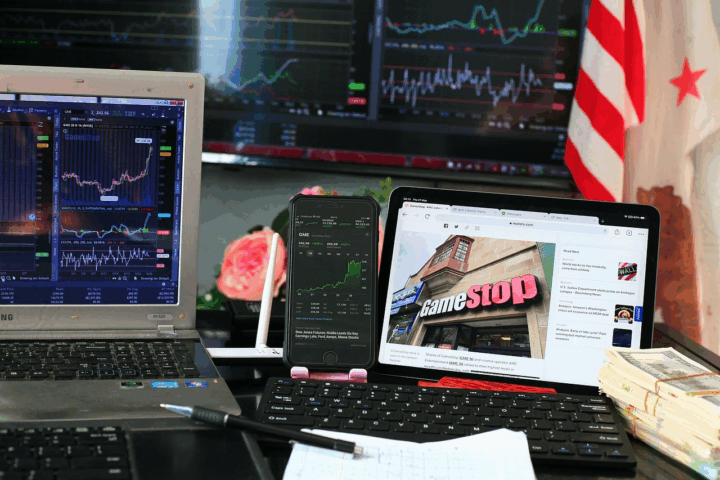No investment is ever completely risk-free. There’s always the possibility of losing all of your hard-earned money, and sometimes even more. That’s why you should never invest money you can’t afford to lose. But that shouldn’t be an excuse to sit on the sidelines, especially when there are real opportunities to double your capital. The key is understanding that successful investing requires properly weighing the risks and opportunities in front of you, and making decisions that stack the odds in your favour.
Today’s financial markets make that balance more important than ever. And the only way to stand a real chance of investing successfully is to look beyond quick wins and focus on strategies that combine diversification, continuous learning, and modern strategies that protect your capital while still keeping you in the game. Let’s break down how.
The Current Economic Climate
The global financial backdrop hasn’t been straightforward in 2025; this is especially true for the UK. In Q2, GDP was recorded to have ticked up by 0.3%, which isn’t really terrible, but in context, it isn’t such great news when compared to the 0.7% growth recorded in Q1. Inflation sits stubbornly at 3.8%, still above the Bank of England’s 2% target. Interest rates have eased to around 4%, but business costs are still high, and weak productivity continues to drag on momentum.
There’s also the ongoing geopolitical tensions around the world that are adding pressure to an economy that’s already wrestling with higher costs, not to mention the effect of the recent trade tariffs from the US, which have only made things tougher for UK exporters and importers. On the policy side, the Bank of England has held interest rates around 4.25%, aiming to cool inflation without tipping growth into reverse. But UK policy doesn’t operate in a vacuum. Moves from the Federal Reserve and the European Central Bank also feed straight into UK market sentiment and volatility.
All of this creates the split reality investors are facing today:
- the risk of sudden downturns when global shocks hit,
- and the chance to seize short-term gains or undervalued assets when markets overreact.
To navigate this, many experienced investors turn to financial instruments that thrive on volatility, like CFDs. With CFD trading, you capitalise on the sharp moves triggered by global shocks, which is inherent in the fast-moving market conditions seen today. This offers opportunities to make real short-term gains. However, CFDs carry very high risk and should only ever be approached with discipline and a clear understanding of the potential downside.
Balancing Risk and Opportunity With a Diversified Portfolio
If there’s one investment principle that has stood the test of time and volatility, it’s diversification. Why? Because it is true that no single asset class, sector, or region is immune to shocks. So, by spreading your portfolio across different areas, it’s protected when markets turn. At the same time, you’re giving yourself a strategic foundation for long-term success.
To be clear, this means that you’re:
- Spreading out risk so one underperforming asset doesn’t sink your whole portfolio.
- Positioning yourself to capture growth in different sectors at different times.
- Guarding against volatility due to local downturns or political disruption by looking beyond one geography.
- Aligning your investments with your goals, whether that’s steady income, capital preservation, or long-term growth.
All of this matters even more today. With interest rates shifting, inflation pressures still lingering, and global markets experiencing consistent swings, diversification is a practical safeguard that keeps your portfolio flexible and adaptable.
Note: Diversification is not magic; it won’t eliminate risk. But it’s your first line of defence: it keeps losses in check, reduces the temptation to panic in volatile times, and ensures your portfolio stays aligned with your long-term objectives.

Continuous Market Education as a Long-Term Asset
Markets are not stable. They aren’t meant to be. They always have ups and downs, and knowledge of those changes (the causes, the expectations, and the patterns) is what separates successful investors from everybody else. This knowledge also keeps investors from panicking when volatility hits, and it helps you stick to your trading strategy rather than your instincts.
How do you get informed? Well, that depends on you. You don’t need to bury yourself in charts all day, every day. You just need to stick to whatever media you’re comfortable with and find trusted financial outlets to read from.
You could also:
- join webinars,
- take structured courses,
- or keep an eye on regulatory updates.
Once you understand the forces shaping markets at any given time, you’re in a much better position to judge whether an opportunity is worth the risk.
Advanced Strategies for Experienced Investors
If you’re an experienced investor, there are some tools beyond the usual buy-and-hold approach that can help manage risk while also taking advantage of short-term opportunities.
- Options, for example, can be used to hedge against downturns or generate extra income through covered calls.
- Futures contracts are another way to speculate on or lock in prices for commodities and indices. Some also use short selling to profit when markets fall, though the risks are significant.
- CFDs sit in the same category. It is flexible, widely available in the UK, and popular for trading volatility without owning the underlying asset. But just like the others, it comes with high risk. How? Well, while you can trade with leverage to magnify your gains, it can just as easily magnify losses.
Practical Steps To Balance Opportunity and Risk
Striking the right balance is all about structure. Here are four steps to help you keep opportunity in play while keeping risk under control:
- Start with diversification: build a portfolio that spans asset classes, sectors, and regions to cushion against shocks.
- Keep riskier tools in check: strategies like CFDs can have a place, but they should only ever take up a small share of your capital.
- Set your guardrails: know your exit points and risk thresholds before committing money, and stick to them.
- Stay adaptive: commit to continuous learning so you can adjust as markets shift rather than reacting in panic.

Balancing Risks Without Missing Opportunities
Investing in 2025 means living with volatility, but it doesn’t have to mean being paralysed by it. By grounding your portfolio in diversification, using higher-risk tools sparingly, and setting clear limits, you can stay positioned for growth without overexposing yourself.
Education and discipline are the real differentiators. You cut through noise, and make decisions with confidence. In the end, successful investors aren’t those who avoid risk or rush towards it carelessly, but those who manage it wisely while keeping an eye on the opportunities that uncertainty often creates.







